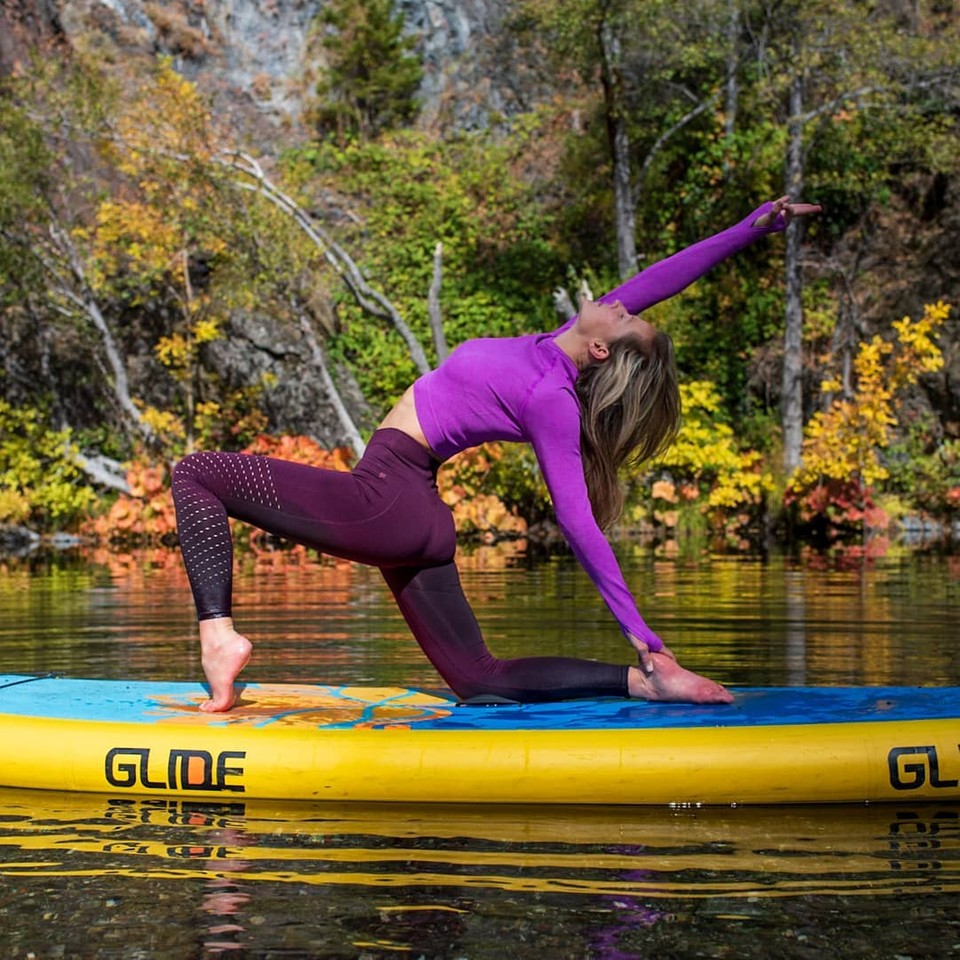
The Meteoric Rise of Inflatable Paddle Boards in Yoga and Fitness Classes
Find out why SUP yoga and fitness classes are taking the outdoor recreation world by storm and what you can do to capitalize on this trend.
Key Highlights
-
Unique Workout Experience: SUP yoga and fitness classes offer a distinctive blend of physical challenge and mental tranquility, set against the backdrop of nature's serene beauty.
-
Benefits of Inflatable SUPs: Inflatable paddle boards are lauded for their stability, portability, and ease of storage, making them the ideal choice for water-based workouts.
-
Essential Gear and Preparation: Minimal equipment is needed to get started, with a focus on selecting high-quality gear for the best experience, including a stable board like the Glide O2 Lotus.
-
Safety and Class Selection: Prioritizing safety through proper gear, awareness of conditions, and choosing the right class level ensures a rewarding and secure SUP yoga or fitness session.
-
Physical and Mental Health Benefits: Engaging in SUP yoga and fitness not only enhances physical strength and balance but also promotes mental well-being through relaxation and mindfulness.
In the ever-evolving world of water sports and fitness, the inflatable stand up paddle board (SUP) has carved out a significant niche, particularly within the yoga and fitness community. At Glide, we've watched with enthusiasm as more people discover the unique blend of challenge and tranquility that SUP yoga and fitness classes offer. Let's dive into why these classes on the water are transforming workout routines and how you can get onboard with this fantastic trend.

Elevate Your Yoga and Fitness Routine with an Inflatable SUP
Imagine transitioning into a Warrior II pose as the gentle flow of water beneath your inflatable paddle board challenges your balance and core stability. This is the allure of SUP yoga and fitness. The dynamic surface of a SUP board amplifies the intensity of traditional exercises and yoga poses, offering a workout that is as effective as it is exhilarating. The buoyancy of an inflatable SUP makes it an ideal platform for a wide array of workouts, turning the water into your gym and bringing a fresh perspective to your fitness regime.
Why Choose an Inflatable SUP for Your Workout?
Selecting the right equipment is crucial for a successful SUP yoga or fitness session. The best inflatable paddle boards for these activities are not just any boards; they're specifically designed with stability, buoyancy, and comfort in mind. Glide's O2 Lotus, for instance, is engineered as a yoga platform, featuring a high weight capacity and a comfy deck pad to support your poses. Unlike traditional boards, the inflatable SUP is forgiving, portable, and easy to store, making it a perfect choice for yogis and fitness enthusiasts alike.
Gear Up for Your Next Adventure
Embarking on a SUP yoga or fitness class requires minimal equipment but choosing quality gear can significantly enhance your experience. Alongside your inflatable SUP, you'll need a paddle, a personal flotation device, and possibly a yoga mat or towel for extra grip. However, with boards like the Glide O2 Lotus, the included deck pad is often all you need for a secure and comfortable session.
Finding the Right Class and Staying Safe
Exploring yoga and fitness on an inflatable SUP is an adventure that begins with finding the right class. Certified and experienced instructors can make all the difference, ensuring that your workout is not only effective but safe. Safety on the water is paramount, necessitating a properly fitting PFD, awareness of the weather and water conditions, and basic swimming skills. Always start with a class suitable for your level and gradually work your way up to more challenging poses and workouts.
Prepare to Engage and Transform

Preparing for a SUP yoga or fitness class goes beyond physical readiness. Hydration, sun protection, and appropriate attire are key to ensuring that your experience is enjoyable and beneficial. Understanding how to set up your inflatable paddle board correctly, from inflation to anchoring, will give you confidence and peace of mind as you move through your workout.
The Impact of SUP Yoga and Fitness
The benefits of incorporating SUP yoga and fitness into your routine are profound. Beyond the physical gains in balance and strength, these activities offer mental health benefits, promoting relaxation and mindfulness amidst nature's serenity. Whether you're perfecting a paddle board plank or embracing the stability challenges of a paddle board Warrior II, each pose and exercise invites you to connect with your surroundings and find your flow.
Embarking on Your SUP Journey
As we wrap up, it's clear that the fusion of inflatable SUPs with yoga and fitness isn't just a trend; it's a transformative practice that enriches both body and soul. Whether you're a seasoned yogi, a fitness enthusiast, or someone looking to shake up their workout routine, the world of SUP yoga and fitness awaits. With the right board, like the Glide O2 Lotus, and a spirit of adventure, you're all set to explore new horizons of wellness and joy on the water.
Conclusion

The integration of inflatable paddle boards into yoga and fitness has revolutionized how we approach our workouts, blending the tranquility of the water with the intensity of physical exercise. At Glide, we're passionate about providing you with the best SUP experience, whether you're flowing into a yoga pose or powering through a fitness routine. Embrace the challenge, enjoy the serenity, and discover the unmatched benefits of SUP yoga and fitness.


